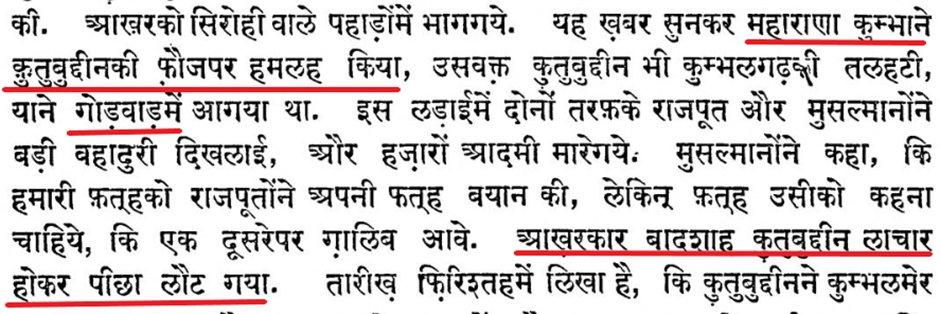1.
#Thread on the great #HinduHero of Mewar - Maharana Pratap Singh - more dearly known as Maharana Pratap.
This thread delves into his story of Hindu Resistance to the Mughals.
#Hindutva #Rajput #MaharanaPratap #History #Mewar
#Thread on the great #HinduHero of Mewar - Maharana Pratap Singh - more dearly known as Maharana Pratap.
This thread delves into his story of Hindu Resistance to the Mughals.
#Hindutva #Rajput #MaharanaPratap #History #Mewar
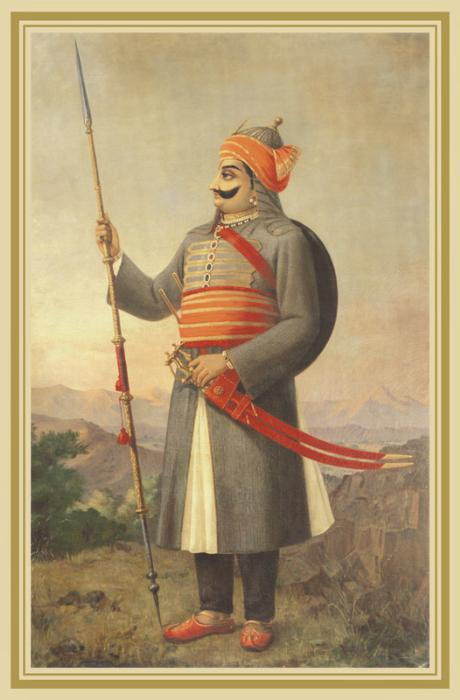
2.
1540, May 9: Maharana Pratap was born at Kumbhalgarh to Udai Singh II & Jaiwanta Bai.
1568: Akbar sieged & captured Chittorgarh. Mewar base shifted to Kumbhalgarh.
1572, Feb 27: Maharana Udai Singh II passes away, nominates Jagmal - his 9th son - as successor.
1540, May 9: Maharana Pratap was born at Kumbhalgarh to Udai Singh II & Jaiwanta Bai.
1568: Akbar sieged & captured Chittorgarh. Mewar base shifted to Kumbhalgarh.
1572, Feb 27: Maharana Udai Singh II passes away, nominates Jagmal - his 9th son - as successor.

3.
1572, Mar 1: Mewar nobles support Maharana Pratap for the throne & force Jagmal to step down. Jagmal departs to serve Mughals.
Maharana Pratap makes Kumbhalgarh & Gogunda as his bases of operation against Mughal aggression.


1572, Mar 1: Mewar nobles support Maharana Pratap for the throne & force Jagmal to step down. Jagmal departs to serve Mughals.
Maharana Pratap makes Kumbhalgarh & Gogunda as his bases of operation against Mughal aggression.
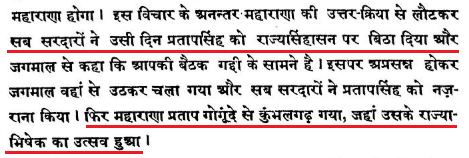

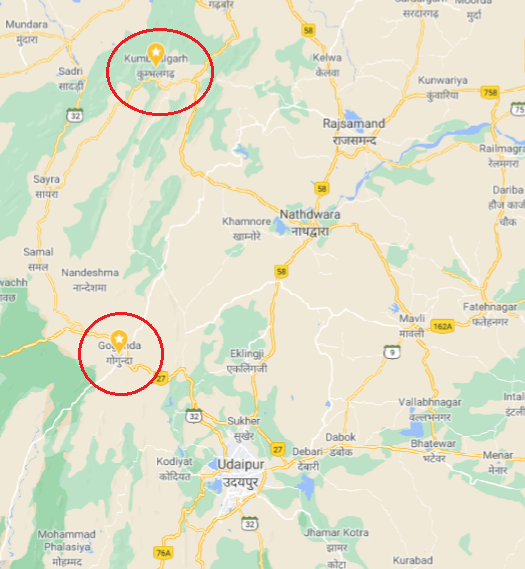
4.
The 1568 Mughal conquest had led to loss of productive eastern Mewar lands to Mughals. Financial mgmt. of the realm was crucial.
Maharana Pratap's Jain minister, Bhamashah, used his excellent administrative acumen to manage the finances for campaigns of Maharana Pratap

The 1568 Mughal conquest had led to loss of productive eastern Mewar lands to Mughals. Financial mgmt. of the realm was crucial.
Maharana Pratap's Jain minister, Bhamashah, used his excellent administrative acumen to manage the finances for campaigns of Maharana Pratap

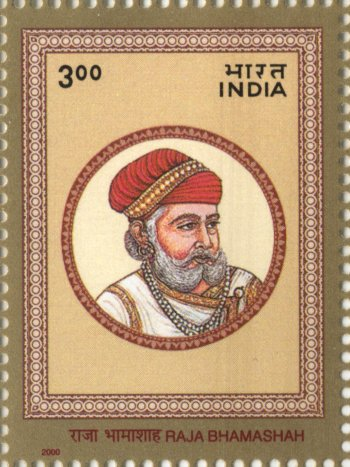
5.
1572-6: Three diplomatic overtures made by Akbar to Maharana Pratap – Man Singh (Jun 1573), Bhagwan Das, Todar Mal – trying to get him to serve Mughals i.e. vassalize him.
But, all three approaches were *rejected* by Maharana Pratap!
A war was inevitable.


1572-6: Three diplomatic overtures made by Akbar to Maharana Pratap – Man Singh (Jun 1573), Bhagwan Das, Todar Mal – trying to get him to serve Mughals i.e. vassalize him.
But, all three approaches were *rejected* by Maharana Pratap!
A war was inevitable.
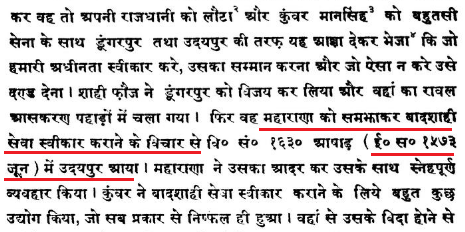


6.
1576, Jun 18: Battle of Haldighati was fought between Mewar & Mughals. Mewar army had 3000 cavalry & 400 Bhil archers. Mughals possessed 10000 men.


1576, Jun 18: Battle of Haldighati was fought between Mewar & Mughals. Mewar army had 3000 cavalry & 400 Bhil archers. Mughals possessed 10000 men.
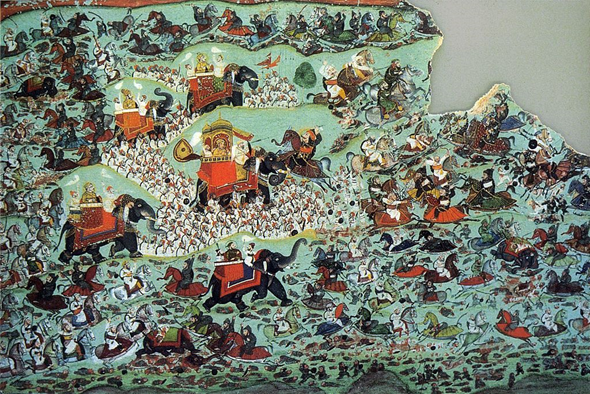
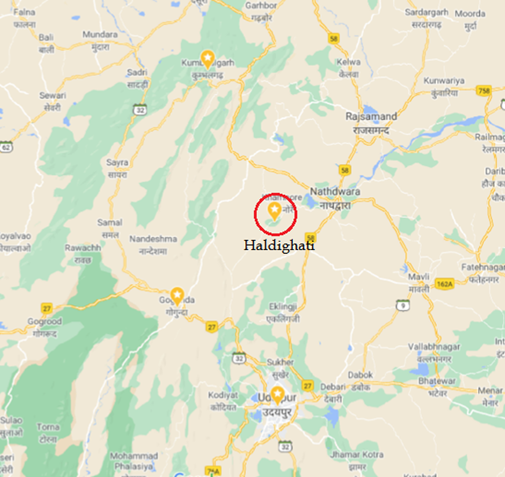

7.
In the midst of furious fighting, Maharana Pratap faced Man Singh. His beloved horse Chetak stepped on Man Singh's elephant's trunk,Maharana Pratap threw spear at Man Singh, but he dodged.
In the face-off, Chetak was injured,& Maharana was led out safely to fight another day.


In the midst of furious fighting, Maharana Pratap faced Man Singh. His beloved horse Chetak stepped on Man Singh's elephant's trunk,Maharana Pratap threw spear at Man Singh, but he dodged.
In the face-off, Chetak was injured,& Maharana was led out safely to fight another day.
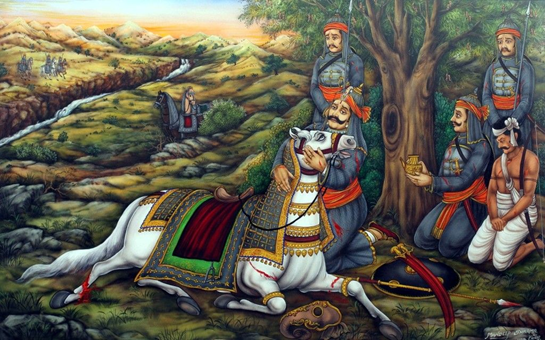

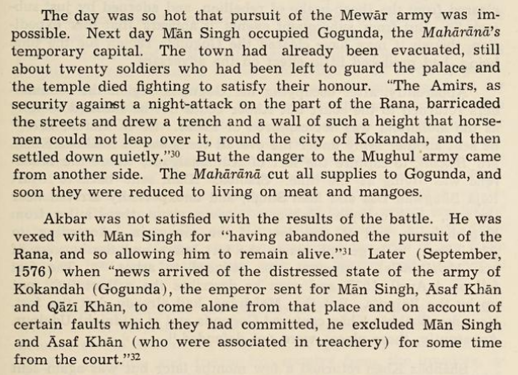
8.
1576, Oct: Mughal armies under Man Singh, Qutbuddin Khan, Raja Bhagwan Das, etc. were sent twice in Maharana’s pursuit to Gogunda & surroundings, but were unsuccessful.
Maharana Pratap had made Kumbhalgarh his base.
1576, Oct: Mughal armies under Man Singh, Qutbuddin Khan, Raja Bhagwan Das, etc. were sent twice in Maharana’s pursuit to Gogunda & surroundings, but were unsuccessful.
Maharana Pratap had made Kumbhalgarh his base.
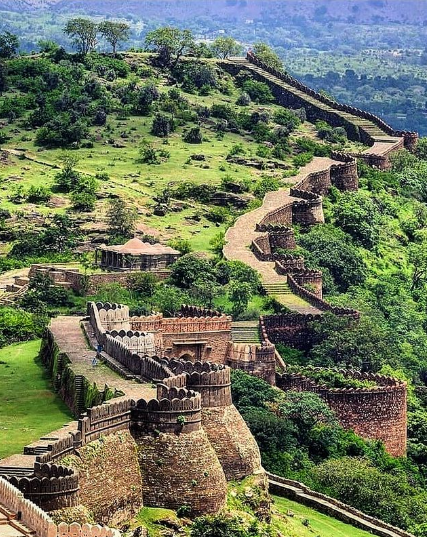
9.
1578, Mar: Mughal army under Shahbaz Khan sent to Kumbhalgadh.
After a battle there (Apr 4, 1578), Mughals occupied Kumbhalgarh; but again failed to capture Maharana Pratap. On Apr 5, Mughals captured Gogunda & looted Udaipur.
#Mughals
1578, Mar: Mughal army under Shahbaz Khan sent to Kumbhalgadh.
After a battle there (Apr 4, 1578), Mughals occupied Kumbhalgarh; but again failed to capture Maharana Pratap. On Apr 5, Mughals captured Gogunda & looted Udaipur.
#Mughals

10.
1578, Dec: Mughals under Shahbaz Khan invaded Mewar again, & set up outposts in Mewar to restrict Maharana’s movements.
Maharana ordered all farmers to move to mountainous areas for cultivation & not to supply Mughals at all.This scorched-earth policy devastated the Mughals.
1578, Dec: Mughals under Shahbaz Khan invaded Mewar again, & set up outposts in Mewar to restrict Maharana’s movements.
Maharana ordered all farmers to move to mountainous areas for cultivation & not to supply Mughals at all.This scorched-earth policy devastated the Mughals.
11.
1582: Battle of Dawer (or Dewair). The outpost officers Bahlol Khan & Sultan Khan were k!lled by Maharana Pratap & his son Amar Singh respectively.
Mughals retreated to Amet, but were chased & defeated. 36 Mughal garrisons & 84 outposts in Mewar were vacated in the aftermath


1582: Battle of Dawer (or Dewair). The outpost officers Bahlol Khan & Sultan Khan were k!lled by Maharana Pratap & his son Amar Singh respectively.
Mughals retreated to Amet, but were chased & defeated. 36 Mughal garrisons & 84 outposts in Mewar were vacated in the aftermath
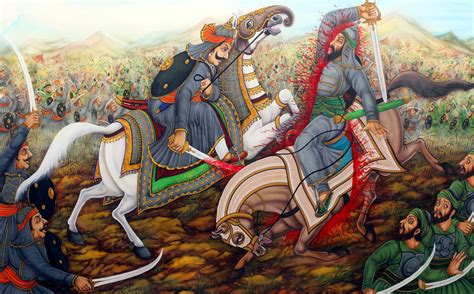
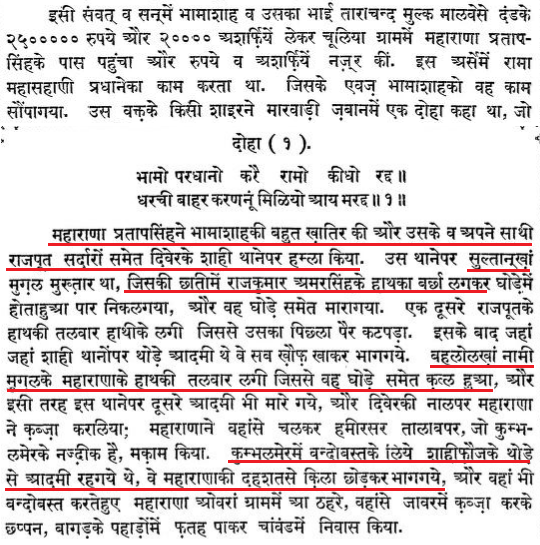

12.
The victory at Dewair was a huge boost to Maharana's Mewar Reconquest campaigns.
1584-5: Mughal army under Jagannath Kachhwaha sent to Mewar to capture Maharana Pratap, returned empty-handed.Abu Fazl’s remark indicates the terr0r which Maharana Pratap struck in Mughal hearts
The victory at Dewair was a huge boost to Maharana's Mewar Reconquest campaigns.
1584-5: Mughal army under Jagannath Kachhwaha sent to Mewar to capture Maharana Pratap, returned empty-handed.Abu Fazl’s remark indicates the terr0r which Maharana Pratap struck in Mughal hearts

13.
1589: Maharana Pratap’s reconquest campaigns end, with all of Mewar back in the Hindu control, except Ajmer, Chittorgarh & Mandalgarh.
Approx territory after the reconquest 👇

1589: Maharana Pratap’s reconquest campaigns end, with all of Mewar back in the Hindu control, except Ajmer, Chittorgarh & Mandalgarh.
Approx territory after the reconquest 👇


14.
1597, Jan 29: Maharana Pratap passes away due to injuries in a hunting accident at Chawand.
A Memorial dedicated to this free-spirited, courageous Maharana of Mewar today stands at Chawand.

1597, Jan 29: Maharana Pratap passes away due to injuries in a hunting accident at Chawand.
A Memorial dedicated to this free-spirited, courageous Maharana of Mewar today stands at Chawand.
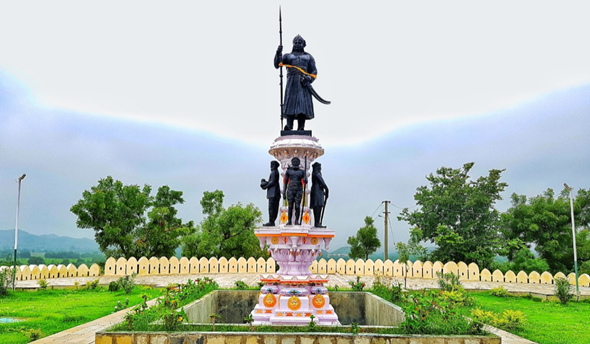

15.
Maharana Pratap today inspires us with the quintessential Rajput qualities:-
Undaunted heroism, perseverance, soaring ambition, commanding talents, and fervour of religious zeal.
His life will inspire us till eternity. 🙏🕉️
#Hindutva #History #MaharanaPratap
Maharana Pratap today inspires us with the quintessential Rajput qualities:-
Undaunted heroism, perseverance, soaring ambition, commanding talents, and fervour of religious zeal.
His life will inspire us till eternity. 🙏🕉️
#Hindutva #History #MaharanaPratap
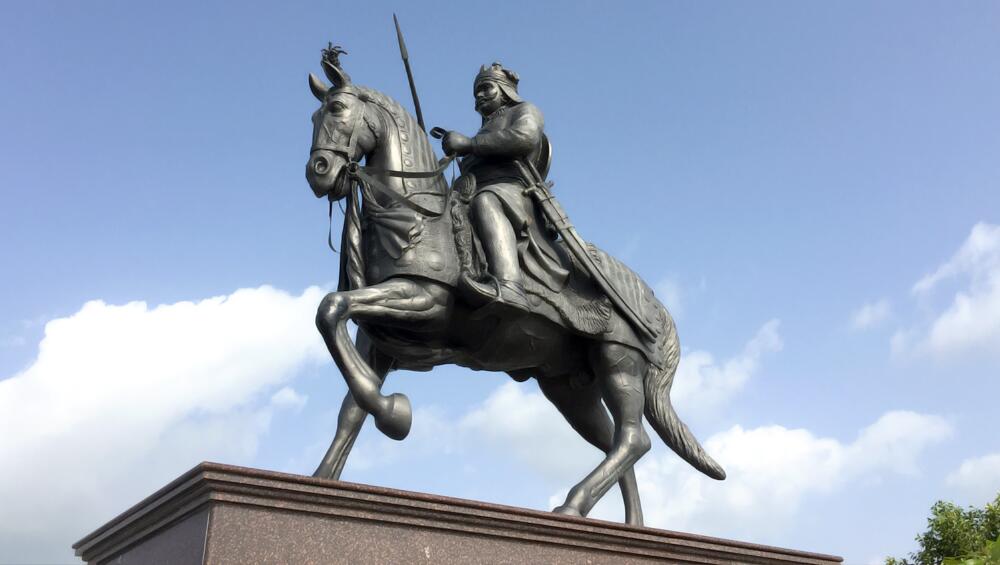
• • •
Missing some Tweet in this thread? You can try to
force a refresh




